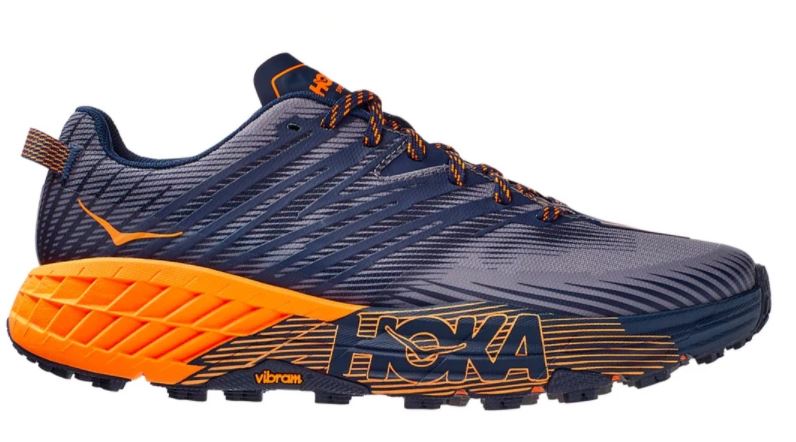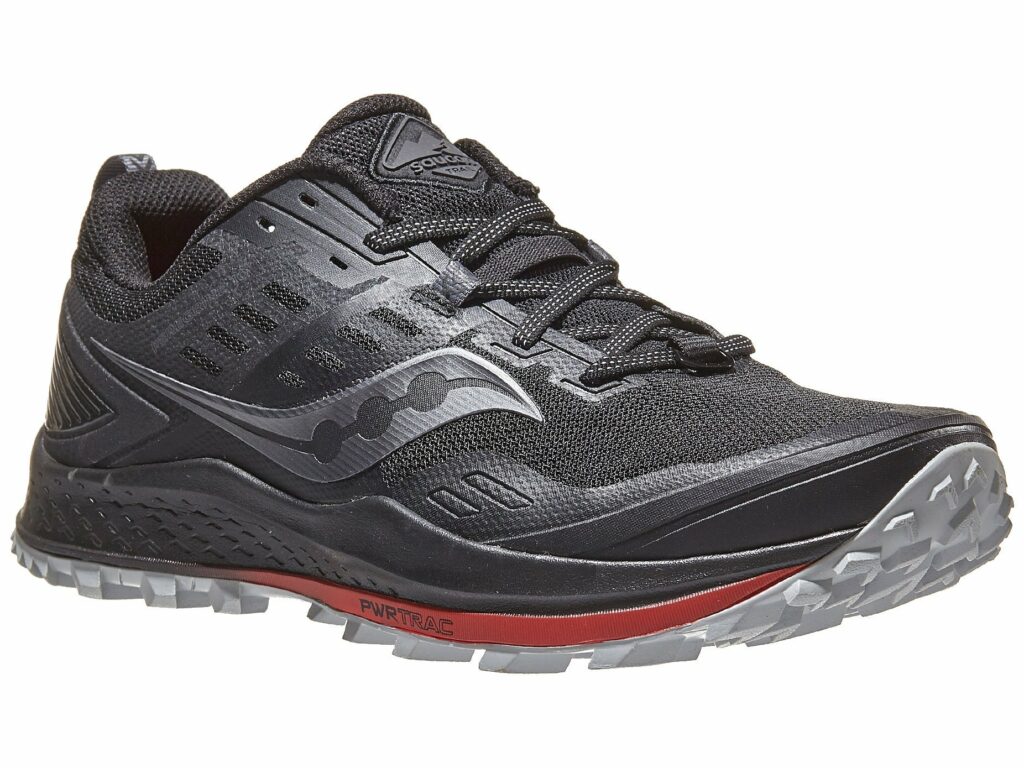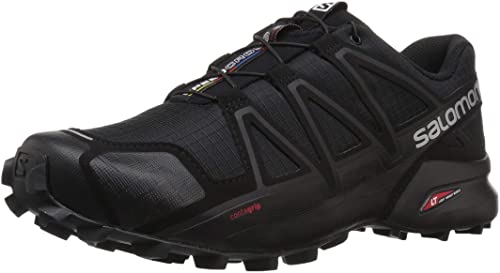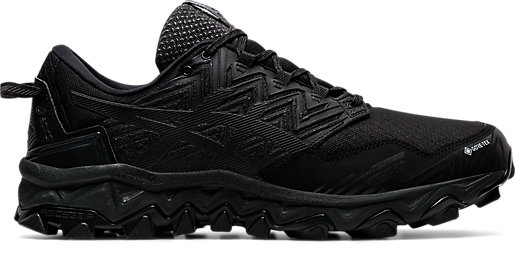Whether you are just starting out or an experienced trail runner, the right shoes provide the proper foundation for your whole body. Correct shoes can help reduce the likelihood of injury and make the run more enjoyable. Making sure you get the right shoes that fit well from the beginning is an important milestone on your trail running journey.
Technical shoe attributes
Do you run in wet conditions or dry trails? Are the trails rocky or manly sand and dirt? Will you run long distance or less than 15km? These are key points to consider when looking for that perfect shoe. We look at each of the following aspects when deciding what shoes to get:
Grip/rubber & tread
To conquer technical terrain grippy tread is a must. If you are running over lots of rocks and tree roots look for a tread with extra sticky grip. If you are running over mud then maybe a deeper tread pattern will be important. Trail shoes typically have a deeper tread with sticky rubber shoe soles to offer more traction and stability in these conditions. Many current shoe models now feature directional tread front and back to increase traction on ascents and descents which can be helpful on technical trails like those around Sydney, Australia.
Trail Running shoes need to be able to handle a wide variety of terrain
Rock plate
After you have selected the appropriate tread the next thing to consider is a rock plate. Specific to trail-running shoes, rock plates are hard plastic inserts situated between the midsole and outsole of the shoe to prevent sharp objects like roots and rocks from injuring the foot. Generally made from plastic or carbon fibre, rock plates are an industry standard and feature on almost all trail running shoes on the market.
Drop
The ‘drop’ is the difference between the height/thickness of the midsole under the heel versus the height/thickness under the ball of the foot while cushioning is the overall amount of padding in the sole. Generally speaking, a higher drop shoe can lead to more impact on the hips and knees, whereas a lower drop can put increased load on the foot, ankle and lower leg. Running long distances results in high levels of repetitive strain and impact on the body making more support important – especially if you already have existing injuries.
Cushioning
Cushioning considerations are similar to drop but impact over the entire sole rather than just in the heel. Do you like to feel like you are running on a cloud while trail running or do you want to experience the feel of the trail beneath you? Do you run long distances or short? Long-distance running will lead to greater impact on the body making a higher level of cushioning more important to reduce injury and fatigue.
Materials
Modern trail running shoes are made from synthetic materials that are strong and durable and often heavier than traditional running shoes. The added durability is to help defend the feet from stubbed toes, sprained ankles and other injuries that come from running on uneven terrain. Many manufactures feature GORE-TEX which according to Wikipedia is:
“a waterproof, breathable fabric membrane… which can repel liquid water while allowing water vapour to pass through”.
GORE-TEK comes in handy in wet conditions and helps keep feet dry while letting them breathe – ideal for running through puddles and during the rain. However, don’t count on GORE-TEX to keep you dry if you take your shoes swimming in a stream.
Laces
Traditional or quick lace systems? Traditional laces are a robust proven wait to keep your shoes on and are cheap and easy to replace. Quicklace systems like that of Salomon are becoming increasingly popular due to their convenience, fastening speed and feeling of a secure fastening all the way along the shoe. Furthermore, the systems are often made from tough materials like Kevlar which make them super long-lasting – often Kevlar laces last longer than the actual shoes themselves.
Comfort
The most important thing with buying new shoes is a good fit. Shoes should feel great from the first moment of trying them on with no breaking in period required. Often difference brands and models will cater to different foot shapes. Narrow options are often common in Adidas and Salomon while many brands will offer extra-wide versions of shoes. When trying shoes on it is important to consider if any parts of the shoe feel weird or uncomfortable which may indicate that the shoes are no suited to your feet and will create excess rubbing leading to blisters or aches. Things to look out for are shoes that are too narrow or rubbing around the ankle. If you can’t find instore and are buying online then check the return policy and consider multiple shoes to try on and experiment with to check if they fit well or are likely to give you the above-mentioned issues.
Shoe options to consider
Now let’s look are a range of entry-level trail running shoes and how they compare:
Hoka: One One Speedgoat 4
Do you like a brightly coloured shoe that will garner attention? Do you want to feel like you are running or a cloud or plan to run 40km all at once? Maybe Hoka have the shoe for you. The most brightly coloured of the review, it features a great fit for a wide variety of foot types and is of solid construction to guard against all those shape rocks and nasties you typically encounter on Australian trails. The shoe features the Vibram (a brand famous in hiking shoe circles) grippy outsole with 5mm tread depth making for an awesome grip which is particularly handy up and down steep rocky ascents. The shoe sole is super-cushioned – unlike most of the shoes reviewed, if you like the cloud running experience then this is the shoe for you.

Saucony Peregrine 10
Named after the Perergine Falcon the Saucony trail runner is lightweight and built for speed. The shoe is targeted as a fast and light runner for those who enjoy a little less cushioning – basically the opposite of the Hoka above. This creates a very responsive, stable shoe that is low to the ground and suited to those who want to have more feel on the trail. The shoe features an aggressive tread with forward direction grip under the ball of the foot while reverse tread under the heal to improve grip and stability. The directional grip is perfect for uphill sensitivity and while giving extra control on downhill descents. The minimal cushioning also reduces weight to 303g, making this a great light runner ideal for short-distance trail runs.

Salmon Speedcross 4
Featuring deep-set lugs at 6mm each that are sure to leave bite marks in the trail as you go. The Speedcross is a well-built shoe and while the exaggerated tread is probably too much for running on pavement alone it does lend itself well to a wide variety of terrains such as rock, sand, grass and dirt. I found the shoe particularly good on muddy trails with the widely spaced lugs not collecting mud, while the depth of the lugs gave me sufficient purchase to avoid sliding around. The forward-facing lugs at the front also provided extra protection against toe-stubbing – a feature not present on the other shoes reviewed here. The Speedcross features Salomon’s quick lace system which makes your feet feel securely wrapped in for the duration of the trail and the pouch in the tongue provides a sturdy hiding place for the adjustment toggle. One drawback with the shoe is that the fit is quite narrow so try these on before buying, or try an online retailer with free returns such as Amazon. Cushioning wise, the shoe is on the lighter side, being much less than the Hoka, however one does feel that their feet are well protected in the Speedcross from whatever the trail throws at you.

ASICS Trabuco 8 GTX
Given the ASICS popularity as a running shoe – how do their trail running shoes compare? ASICS answers the call with the Trabuco 8. Featuring an all-black color scheme the runner adds a level of stealth to your trail run and is perfect for the understated trail running fan. The shoe provides a good balance across the main technical attributes discussed above thereby providing a good entry-level option for a runner who wants support across all technical areas. The grip while not as deep as the Speedcross or as fancy as the Peregrine provides great traction on technical trails without being too heavy or deep. The GORE-TEX membrane keeps your feet dry in wet conditions unless you go for a swim and I found ideal during light winter time snow. The sturdy construction provides good protection for the feet but doesn’t feel as secure as the Speedcross especially around the toe area. While not being a Hoka in the padding department, the shoe features a moderate level of cushioning and is great for shorter trails providing study purchase and stability. Overall a good entry-level shoe.

Alternative considerations
Birkenhead outlet in Sydney offers a lot of last season shoes there at great prices because so many outlet stores are packed together one can try on and compare trail running shoes from the likes of New Balance, ASICS, Nike speciality stores plus many other multi-brand retailers so I highly recommend a visit especially if you are on a budget.